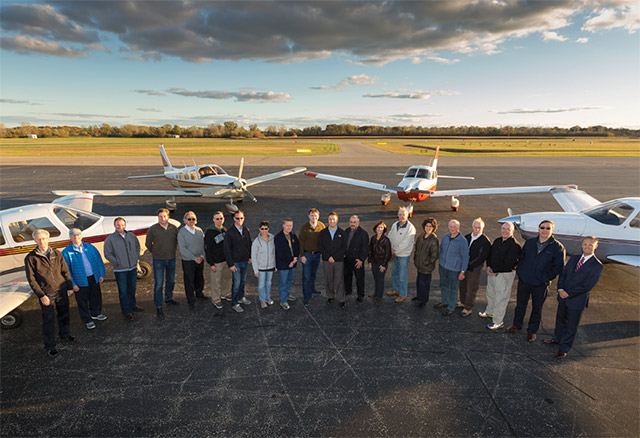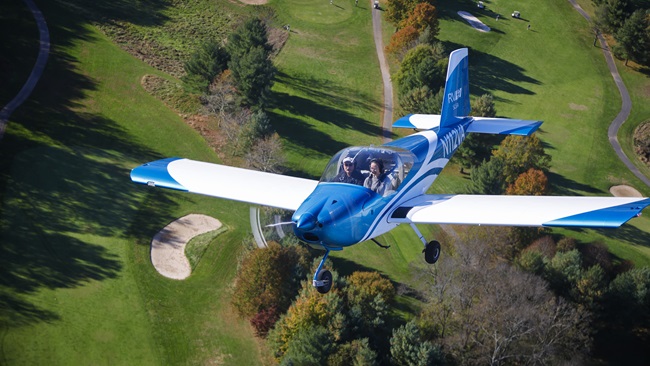Feeding their flying habits
In the waning months of 1940, a group of pilots did what so many others had done, and would do for decades: They formed a flying club so they could feed their flying habits at a reasonable price. Calling themselves the Ann Arbor Flyers, they purchased a Piper J–3, based it on the Ann Arbor Municipal Airport, and flew it as much as each pilot could afford. That action would affect the lives of hundreds of pilots and prospective pilots over the next 75 years.
At the end of the next year, the United States’ traumatic introduction to World War II nearly brought general aviation flying to a standstill, destroying many flying clubs. The Ann Arbor Flyers persevered, finding ways to fly during the war years and beyond.
Club president Melanie McNichols said one of the reasons for the club’s long-term success is a strong social aspect that makes it a place for people who love to fly to come together, whether or not they are currently flying. In addition to a monthly membership meeting, members gather once a month to wash and wax all of the club’s four IFR-equipped airplanes: three Piper Archers and a Saratoga. There also is a financial incentive to attend—doing so gives a credit toward the next month’s dues.
Each member has an equity interest in the airplanes—club members believe that a pilot takes better care of an airplane he or she owns, and the gleaming condition of the airplanes shows it. Rental rates are set by the membership, based on recommendations of the board of directors. Close attention is paid to costs for each airplane, and rates are set to allow for progressive upgrades. Dues cover the monthly fixed costs of the club, so if there is an extended period of lousy flying weather, the club doesn’t hemorrhage money. Don Musinski, who joined the club in 1975, said that because of careful tracking of costs and setting aside money for overhauls and refurbishment, the club has never had to assess the membership when an engine unexpectedly needed an overhaul.
The club makes sure prospective members experience their culture and decide if it’s right for them. They attend a series of monthly meetings before the membership votes on their application. Once approved, a flight supervisor acts as a mentor to new members.
Rick Durden is a frequent contributor to AOPA Media.
Starting a flying club
Ready to start a flying club at your airport? AOPA can help. The AOPA flying club initiative can help.
Image: John Sullivan Skypics.com


